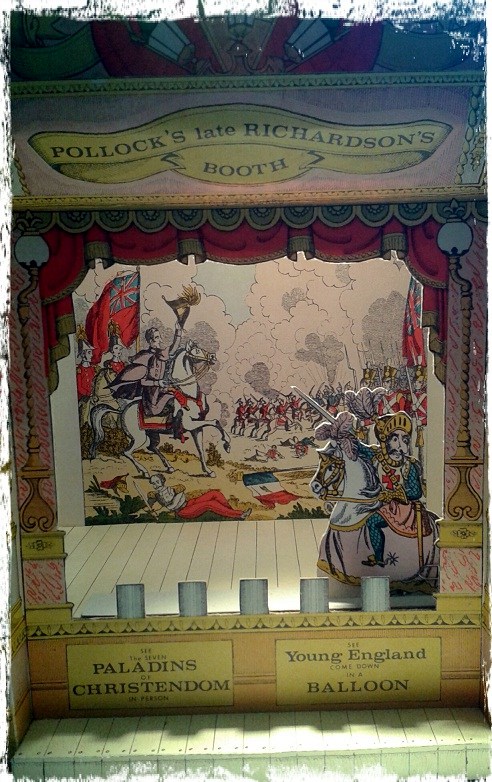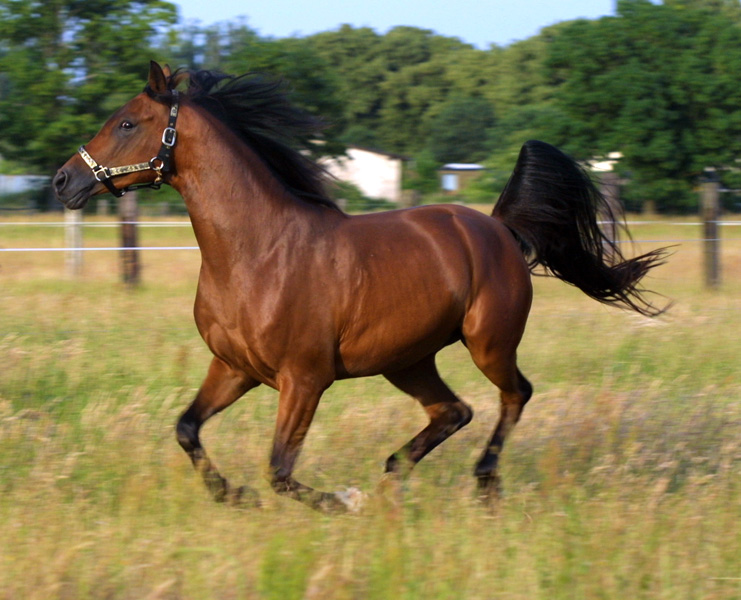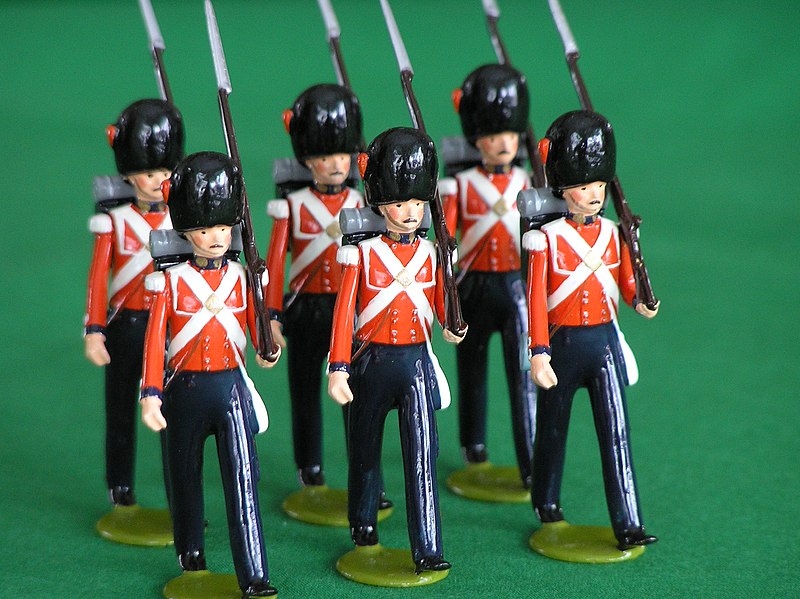
St. George has just saved the other Champions of Christendom from the enchantment by the evil witch Kalyb
A few days ago Janet talked about paper dolls of the Regency period, and today I’d like to add to that theme by talking about another kind of toy produced from paper: toy theatres.

The Seven Champions decide to separate and seek adventures each on his own (St George is off to Egypt in a steamboat)
Toy theatres were first produced by William West in 1811. He ran a haberdashery and circulating library on London’s Exeter Street, which is conveniently close to several theatres, including the Lyceum Theatre, Drury Lane, and Covent Garden. When he first noticed how well cheap prints for children sold, he had the idea to monetize his proximity to the theatres and started to sell theatrical prints. The first of these showed eight characters from Mother Goose, a popular pantomime playing at Covent Garden at the time. Soon, other printers also joined in and sold character sheets and scenery sheets.

Having arrived in Egypt, St. George hears the most dreadful news: the king’s daughter is in grave peril
These first character sheets were not intended for playing – but it seems that this is exactly what happened: children cut out the characters to play with them. So within two years, West had also begun to sell paper theatres. The prints became ever more elaborate: clever cascading scenery was joined by sheets which enabled the reenactment of theatrical tricks.
Printers typically based their toy theatre sheets on current popular plays, and they made them available in two versions: plain and colored, which led to the famous phrase “one penny plain and two pence coloured.” Putting together toy theatres seems to have been mostly a pastime for boys, and it became a matter of pride to color one’s characters, scenery, and theatre oneself.
Before they were cut out, all parts were typically pasted onto cardboard to give them greater stability and make them more durable (though of course, cardboard would not keep the theatre from going up in flames when a particularly impressive trick involving a bang and lightning effect went wrong). Some children might have even built a wooden frame for their theatres, which would have made playing them much easier. Such wooden frames would have also enabled the young impresario to hang the scenery from the cross links rather than putting them into slits in the cardboard.
To give you an idea of how elaborate toy theatre sheets could become, let us look at J.K. Green’s sheets based on the Christmas pantomime Harlequin St George and the Dragon, which was running at Drury Lane in December 1847: there were 8 plates of characters, 17 plates of scenery, 2 plates of tricks, and 5 plates of wings. (By contrast, the modern version which was published by Pollock’s Toy Theatres in 1972 and which you can see in the pictures accompanying this post, is much abridged and comes with only four plates of scenery and characters.)
But then and now, the play ends with a tableau of the victorious Wellington at Waterloo (*waving to Diane*). This way it draws an explicit comparison between chivalry of the past (St George!) and modern chivalry (Wellington, of course), which boys were supposed to emulate. So, in other words, toy theatres were not only mere entertainment, but also contained a didactic component (if you actually made it to the grand tableau without burning your theatre down, that is).
Toy theatres continue to be produced today (though in smaller numbers), several professional and amateur theatre companies are specialized in toy theatre productions, and annual toy theatre festivals are held in different parts of the world, including at St. Ann’s Warehouse in Brooklyn.
Which play would you like to see on a miniature stage?
~~~~~~~~
The production of Harlequin St. George and the Dragon depicted here was arranged for you by yours truly. I also did all the (inexpert) cutting out and gluing together of the various parts of the theatre, scenery, and characters. 🙂







